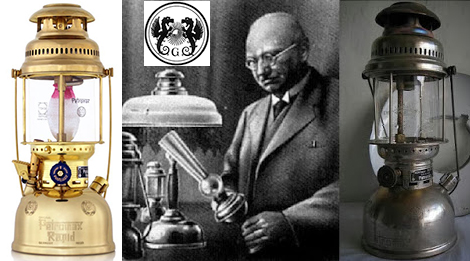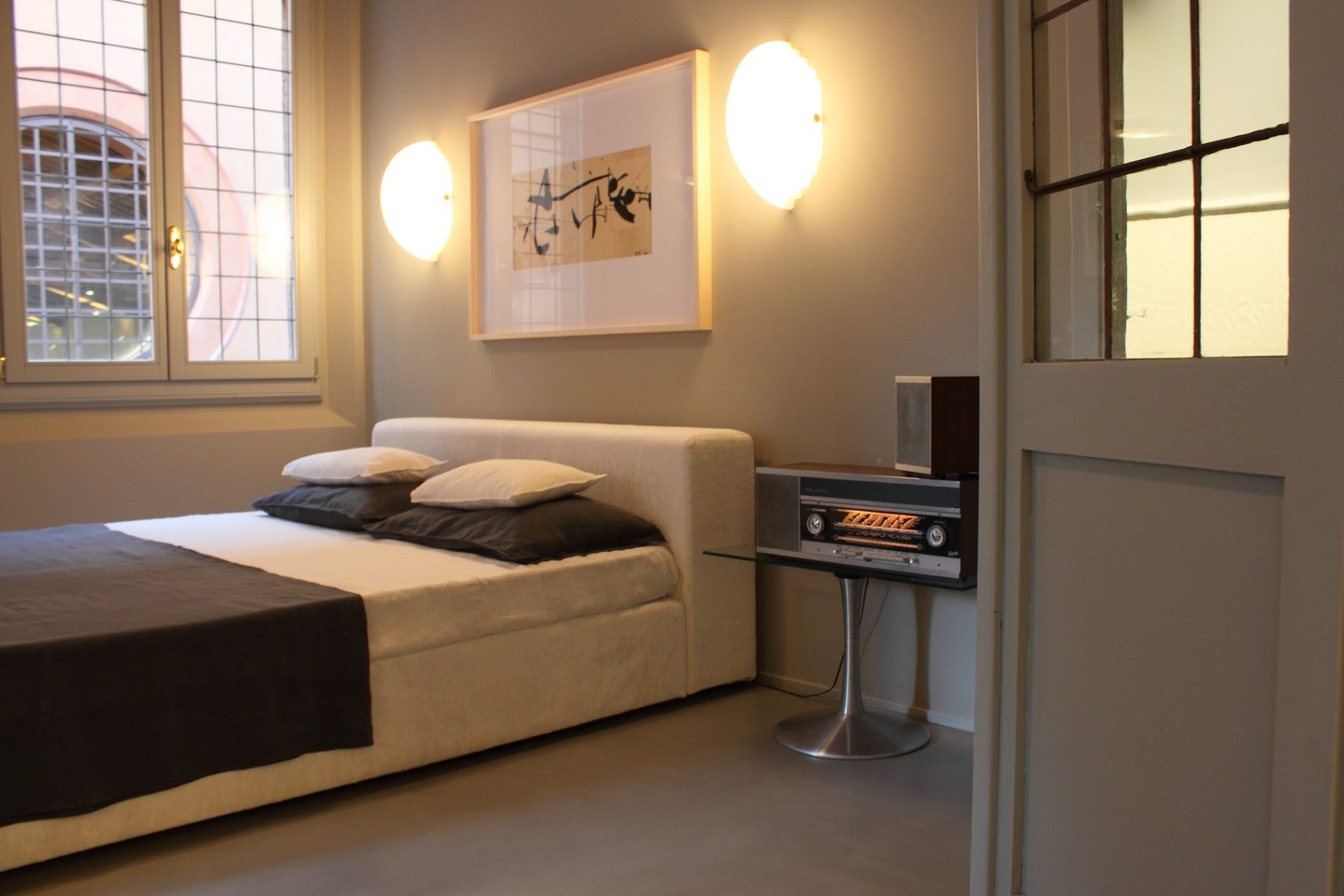 german radios - en
german radios - en
Graetz Melodia 14F – en
- 4th February 201925th February 2019
- by giovanni
GRAETZ MELODIA 14F
GRAETZ MELODIA 14F

The Graetz Melodia 14F immediately distinguishes itself from the other devices produced in the mid-60s by the prestigious brand of Berlin for the very modern look, which used to make large use of metals and plastics.
This interesting design experiment is found, apart from the Melodia 14F, only on the Stereo Unit 250 model.
Comparing, in the pictures on the right, the Melodia 1118 model – the production of which was only finished the year before – and the Melodia 14F, it is impossible not to be impressed by the incredible stylistic evolution of the two devices.
Graetz products have always been characterized by a meticulous and refined design, but in the 1960s there was a real acceleration, which anticipated one of the greatest creative movements of the 1970s, known as the "Space Age".
From the famous "Ball Chair" of the great Finnish designer Eero Aarnio to the Eclisse Lamp of the Italian Vico Magistretti.
The Space Age experiments with new materials and this allows to explore new shapes, previously difficult to build.
In those years, many companies realized some unsurpassed technological “objects”, in great demand nowadays.
Among the producers of technological equipment I mention only – apart from the Graetz with the Melodia 14F Stereo Unit 250, of course – the Grundig with the series of spherical HI-FI speakers AudioRama and the Italian Brionvega with its Algol TV and the Radio Cubo.
In '64, Charles Mingus left the contrabass to record the album “Mingus Plays Piano”, “The Velvet Underground” and “The Who” made their debut, in Italy the group “The Giants” was formed and I conclude the review stealing their battle cry - “Put flowers in your cannons ..."
The Amplifier Section consists of an EL84 in A class for each channel, driven by a section of the doppio triodo ECC83.
The Volume potentiometer is equipped with loudness terminal (Yellow). As known, in fact, when listening to very low volume the basse and the acute notes are not perceived with the same sound intensity as the medie notes, which seem to be clearly predominant.
The Balance (Blue) is inserted between the two channels at the output of the preamplifier.
The Feedback network (Red) was designed to reduce distortion and equalize the risposta in frequenza of the device. In fact, the device is equipped with independent loudspeakers for each channel. Although these loudspeakers are broadband and of excellent quality, they cannot faithfully reproduce the entire audible band. Their frequency response, in fact, decays at the extremes, in particular the low one. The feedback network compensates for the efficiency drop of the loudspeakers at the two ends of the frequency. The result is a surprisingly linear response on a very extensive frequency band. You do not expect a sound like that from such small loudspeakers, and this is how it was obtained.
The Radio Section is very refined, too.
The most interesting feature is the high selectivity of this device, due to the double IF amplifier. In fact, the two EF89 and the numerous MF transformers are visible in the photos.
In FM was even implemented an additional transformer tuned into the converter, in order to make the reception of these frequencies even more stable and insensitive to disturbances.


BLUETOOTH
Bluetooth receiver embed
MULTI PLATFORM CONNECTION
Each radio is equipped with a cable for connection to any digital device.
TUBESOUND IMPROVEMENT
- Bluetooth receiver embed - The unit is equipped with a BLUETOOTH receiver powered directly by the receiver power supply. This makes it possible to control the amplifier from any external digital device as an IPAD, a Smartphone, or a sophisticated multimedia station. So you can hear your preferred web station or your lossesless file without cables on the room. Wireless Receiver can be equipped upon requests.
- Multi Platform Connection - A customized adaptation cable to connect any digital device as Iphone, Smartphone, Laptop, CD Player etc. will be provided with this radio. This special cable suits the different impedances between the modern equipment and the receiver. Furthermore the two stereo channels flow into one without increasing the load to the input unit.


HISTORY
The Ehrich & Graetz metalworks was a factory established in 1866 in Berlin by Albert Graetz (1831–1901) and the tradesman Emil Ehrich (died 1887) under the name "Lampen-Fabrik Ehrich & Graetz OHG" (E&G).
By 1897 the firm was controlled by Albert's sons, Max Graetz, and Adolf Graetz. The company grew rapidly, and in 1899 factory complexes were built in Berlin, in the United States, France, the UK, and Bombay.
Around 1910-1916 Max Graetz developed the famous Petromax Lantern. Around 1925 the factory also produced radios, and other electrical appliances under the name Graetzor.
In the Second World War, just as in the First World War, the company was part of the war industry. With the use of forced laborers from France, Russia and the Netherlands the company made huge gains in production.
At the end of April 1945 the factory was claimed by the Russian army.
In 1949 the firm became part of the "peoples" program, "VEB-VolksEigenerBetrieb" and since 1950 "VEB Fernmeldewerk, Berlin Treptow (RFFT)." VolksEigenerBetrieb, means that the factory was owned by the people for the people (Communism)
In 1948 Erich, and Fritz Graetz founded a new company in Altena, Germany known by the name The Graetz Firm, which was successor to the lost family company in Berlin. The new company produced mainly radios and televisions.
In 1961 the company was then sold to Standard Elektrik Lorenz (SEL) AG, but since 1987 has been to the present owned by the Finnish company Nokia.
MAIN FEATURES
Year of production: 1966/68
Superheterodyne IF 460/10700
6 AM Circuits
10 FM Circuits
Wavebands:
Medium Waves(OM), Long Waves (OL)
Short waves (OC), FM (UKW)
Loudspeakers:
2 Elliptical Fullrange
Dimensions (LHD): 750 x 225 x 190 mm / 29.5 x 8.9 x 7.5 inch
Net weight: 10 kg / 22 lb 0.4 oz
7 Tubes: ECC85, ECH81, EBF89, ECC83, EMM803, 2xEL84


LOUDSPEAKERS
The loudspeakers are two Lorenz LP 1318/19/105 AF with alnico magnet. They are very efficient. So, the 4 watts of each of the two channels is transformed into a noticeable acoustic pressure.
For a “normal” volume listening, not annoying, the knob is positioned at 11 o'clock.
The sound power is therefore more than enough to sonorize also medium-sized environments.
In this way the dynamic response is very prompt, and the lows are slowed down but very present.
This feature allows to take full advantage of the AUX input with lossesless digital files or CDs providing a brilliant and dynamic reproduction.

EQUALIZER AND TONE CONTROLS
In line with the latest trends (of the time) there is a single equalization button, the Sprache key/button (Voice) which attenuates the low and high frequencies, making the transmissions where the speaking prevails more intelligible.
On the sides we find the two tone control knobs.

SEPARATE CONTROL TUNING BETWEEN AM AND FM
The unit is equipped with mechanisms that keep AM and FM bands separate very simple to use.
The tuning knob is single, but a selector switch commutes between cable systems (all steel made) and pulleys dedicated to each band.
The movement is transferred to both mechanisms with a system of pulleys and separated gears.

TUNING INDICATOR
The magic eye has a double function.
The left section (Pink) indicates that the received station is broadcasting in stereo.
The right section (Green) indicates the perfect tuning of the received station.
CONTROL PANEL

Left from the top:
- The Magic Eye that indicates the perfect tuning of each station and the Stereo broadcast
- The volume control (with built-in loudness)
- Axially this balancing.
- The bass control knob
In the center:
The AM display for long, medium, short waves and the FM display.
Right from the top:
The tuning knob, whose movement is very pleasant being supported by a large flywheel
-The treble control knob.
The keyboard:
AUS - Switch off
STEREO - Stereo
TA - Turntables
TB (TA + LW) - Tape Recorder
LW - Long Waves
MW - Medium Waves
SW - Short Waves
UK - FM
SPREACHE - Voice

REAR SIDE
Output for external speakers, with the possibility of excluding the internal loudspeaker depending on how the DIN plug is inserted.
Socket for recorder (tonbandgerat).
Turntable input (Tonabnehmer)
AM and FM aerial inputs and ground socket
RESTORATION STEPS
THE USUAL AMAZING LAST IMAGE















